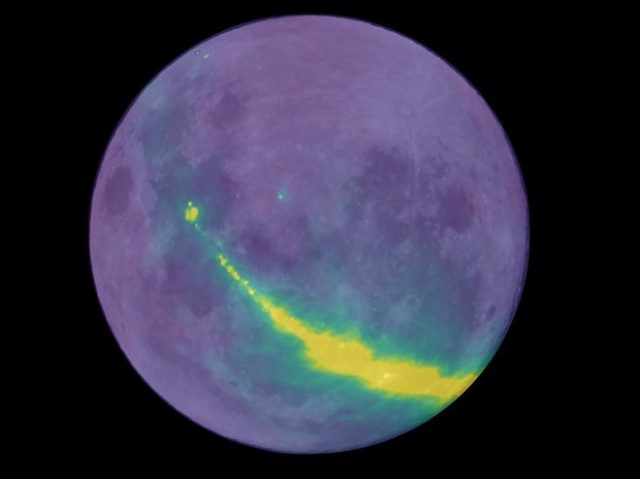MI weekly selection #307

Yellow band is Milky Way’s reflection on moon in new depiction
Milky Way radio waves can be seen as a bright splash of yellow reflected on the moon’s surface in a new image. Astronomers used data from the Murchison Widefield Array in Australia to create the image and plan to use the technique to learn more about the evolution of the early universe.
Dead Sea cities destroyed by meteor blast
A meteor may have exploded over an area near the Dead Sea about 3,700 years ago, wiping out farms and cities. Researchers say the event would have instantly decimated a circular area about 15.5 miles, or about 25 kilometers, wide and would have caused bubbling hot brine from the Dead Sea to wash over farmlands.
Puzzling unusual asteroids near Neptune
Colorful asteroids observed near Neptune have astronomers questioning previous theories. Researchers say they bear little resemblance to asteroids from the Kuiper Belt, where most of those objects originate, and appear sun-baked even though they’ve had little exposure to the sun.
New “supra-kingdom” created by discovery of rare organisms
Scientists have found two species of hemimastigotes, rare organisms vastly different from anything else in any taxonomic kingdom, that represent a new “supra-kingdom.” “They represent a major branch … that we didn’t know we were missing,” said study co-author Alastair Simpson.
Subduction zones drag down large amounts of water
Scientists used seafloor and island seismographs to estimate how much water is pulled underground by tectonic-plate collisions in the western Pacific’s Mariana Trench. After listening to earthquake and other noises from over a year, researchers concluded that subduction zones move about three times more water into Earth’s interior than previously thought.